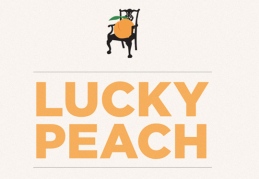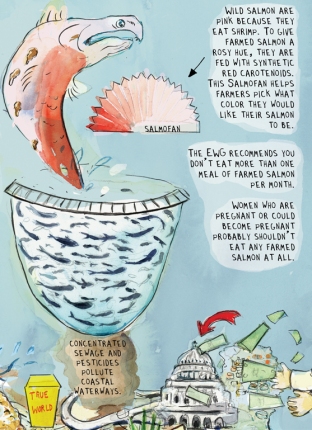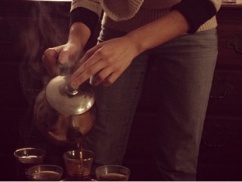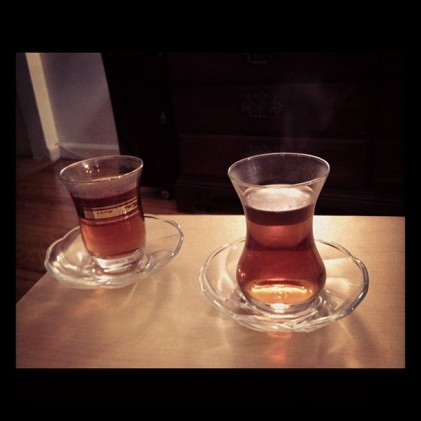I am obsessed with Lucky Peach. It is the quarterly journal of food and writing put together by McSweeney’s in collaboration with David Chang, Peter Meehan, Chris Ying and their posse (often including Anthony Bourdain and Daniel Patterson, amongst others) . 
Each issue focuses on a single theme, and explores that theme from often unexpected angles through essays, art, photography, stories, and recipes.
(For example, one might have expected the “Sweet Spot” issue to be about desserts, but it went a more philosophical route and included pieces about the search for the perfect apricot, the achievement of the ephemeral, split second moment of perfection in a dish, meal, or season, and explorations of the career peaks of athletes and chefs). There were also, of course, some genius approaches to dessert offered by Momofuku’s pastry chef Christina Tosi that you pretty much have to be a professional to undertake.
But why devote Big Ceci space to this publication given that it is not exactly an explicitly food justice or transformative community endeavor?
Well…first of all, I find the publication utterly satisfying in every way so I want to share it with my people. Also, I believe in embracing organic and unofficial subversiveness, creativity, critical analysis, respect, and passion found within spaces not (yet) formally aligned with social movements.
The thing is, the dudely bravado emanating from some of the writing and art of Lucky Peach can be easily digested because the overall approach is deliciously queered and hybridized- multiple forms of media, culinary-cultural reflections, thoughtful political and philosophical commentary, recipes integrated into skillful storytelling, a deep and genuine appreciation for food and those who make it, conversations, collaborations, and humor- providing the complexity and holistic context that I crave when reading and eating, and when reading about eating. (I also find the crass shock-and-awe approach to be chilling out as the publication develops and matures. Something that David Chang even articulates in in his message at the beginning of the most recent issue). Also, like all people who truly care about truly good food, the Lucky Peach crew is extremely knowledgeable about the problematic and the inspiring aspects of food production, agriculture, and food service and they share what they know in really digestable ways….

Exposé on the sushi industry in America. Oy.
Something that really is my bag is collaborative creation and recognition of collective efforts and this Lucky Peach does very well. I commend them for truly coming across as a team. Unlike other publications (or restaurants) with celebrities in the mix, Lucky Peach seems to be a fun and cooperative creative enterprise and through reading it, we get a sense of their crew and the ways they work together, building off each other, inspiring, and challenging each other. It is easy to relate to- it reminds me of my folks and the ways in which we are constructing a shared language, value-system, aesthetic, and vision around food, culture, community, and love.
And although I said above that Lucky Peach is not a “food justice” publication, the articles and their authors always have on-point race and class analysis and articulate these politics in such an unpretentious and dignified way. Having an “American food” issue is tricky. And they pulled it off really successfully. The key is that they are clever and self-critical and with a positive attitude acknowledge who they are and what they are not. And, as they always do, they examine many angles. The issue offers a critical analysis of the language of “invasive species” referring to plants and animals and it’s dangerous connections to the lens through which immigrants are represented. An Ojibwe foodie and writer presents the role of food in the colonization of his tribe while offering a poetic and moving description of traditional wild rice harvesting. Another piece educates the reader about the Khmer Rouge through an unexpected entry point (for those of us who are less familiar with the immigration and labor patterns of Cambodians in the U.S.)- the predominance of Cambodians in the donut shop industry in California.
This literature is using food the way it should be and actually is for many communities- an entry point into a culture, a celebration of special place/time/people, a connection to history, a process of learning, a form of self-expression, an inheritance across generations, a vessel for culture, a way to tell stories….There is also whimsy found in such elements of the issue as the choose your own taco adventure woven between the articles- brilliantly offering a rare nonlinear reading experience. And don’t even get me started on the poignant critical analysis of food and race representations in cinema articulated by Elvis Mitchell in his piece in this issue and in his conversation with Anthony Bourdaine (who, btw, whether you like his crass politically incorrect straight guy shtick or not, is angry about all the right things and sticks it to elitist dickheads like a pro. See his righteous reading of many problematic food writers, chefs, and restaurants in general in Medium Raw. I’m hyped he’s on our side).
Basically, reading Lucky Peach I learn a lot and am unbelievably entertained. Where else can you find a mainstream fancy food project headed by famous chefs and food writers that has such perspective and actually takes on issues of race, culture, identity, class and combines it all with whimsy, science, film, poetry, and cartoons?

The Miso Cast of Characters. The perfect way to learn about different kinds of miso. Lucky Peach Issue #2
Their fifth issue is The Chinatown Issue. I just started reading it and have already laughed out loud, learned how to make fresh rice wine, and been enlightened by the exploration of the function of Chinatown in the white American imagination…check.it.out.





